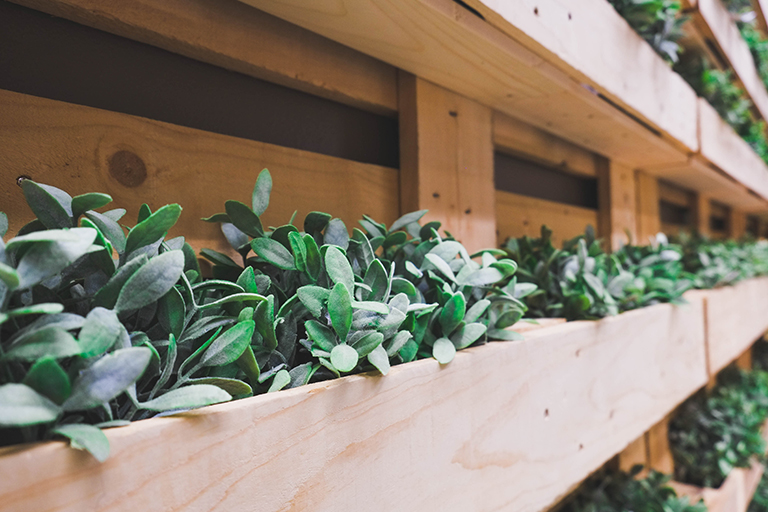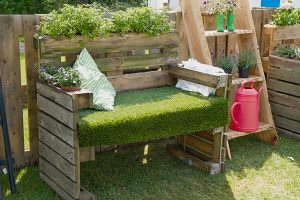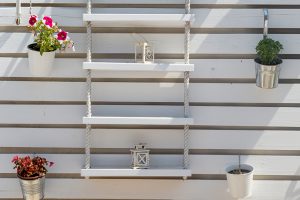By Pamela A. Keene
When it comes to ways of repurposing in the garden, wood pallets can be the stars of the show. From creating vertical herb gardens for smaller spaces to creating weed free planting areas between rows, the versatility of wood pallets is limited only by the imagination.
The national website instructables.com created more than a decade ago by two Massachusetts Institute of Technology graduates, offers detailed instructions and ideas for all types of do-it-yourself, or DIY projects. The section about pallets is extensive and includes information about how to make everything from wall-mounted flowerpot hangers and vertical planters to garden seating and furniture.
“In the past several years, with the growing trends in ‘upcycling,’ recycling and reuse, people have discovered that pallets are a versatile, free source of wood,” says Joe Lamp’l, founder of joegardener.com and the television program “Growing a Greener World” broadcast on PBS and the internet. “Whether you’re using them for gardening projects or building furniture, pallet wood has a lot of character and is a great resource for DIY projects.”
Pallet protocol, preparation and safety
Many gardening projects make use of pallets just the way they are, without disassembling.
“For a vertical herb garden or a plant hanger, there’s no need to take the pallets apart,” Lamp’l says. “However, if you’re using them to grow food products, find out about the original use, making sure they haven’t been pretreated with methyl bromide, a broad-spectrum pesticide that has been used to treat soil for pests, weeds and pathogens but that’s highly toxic to humans. Look for heat-treated pallets instead because they are safer and don’t contain harmful chemicals.”
Pallets made in the United States are typically heat-treated, and by law all pallets made within the past several years must be labeled as either MB for methyl bromide or HT for heat treated. The marking is generally on the end of one of the two-by-four pieces.
Lamp’l suggests pressure-washing pallets to remove any grime or dirt, then create your project.
Creating a vertical garden
Build a one-sided vertical kitchen garden for greens or herbs by standing a clean pallet on end. Decide which side you want to plant in. The slats on the front side are a bit closer together than those on the back.
Once you decide which way it will face, stretch landscape fabric across the inside of the back and along the bottom to keep the soil in place. Then, “You can either mount it on a wall or add two-by-four braces to make it free-standing,” Lamp’l explains. Next, fill it with good-quality potting or container soil and plant seedlings between the slats. He suggests planting garden herbs, such as basil, dill, oregano, chives, parsley and thyme, along with salad greens, lettuce, spinach and leafy crops.
“Don’t be afraid to pack the soil tightly, he advises. “You’ll also want to put your seedlings a bit closer together than if they were planted in an open garden bed.”
Once it’s planted, water your vertical garden well. Monitor to keep it from becoming too dry and feed it with liquid fertilizer according to the package instructions.
Once you discover the versatility of wood pallets in your garden, you’re only limited by your imagination.
Journalist Pamela A. Keene is a photographer and an avid lifelong gardener.



